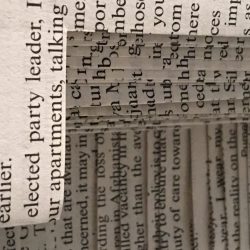On Friday 26th October UWE hosted a free, one-day public symposium on artists’ books in Bristol funded by a UWE Bristol Research Collaboration Fund, award for ‘Artists’ Books in Australia, Brazil and the UK – looking to the past to read into the future’.
This is part of a project investigating the historical development of the artist’s book in South America and Australia, as discrete and important parts of the international status of the contemporary artist’s book. It will investigate these histories of practice alongside interviewing contemporary practitioners in the field about their enduring influence.
The team of researchers are meeting in Bristol in October and as part of our research we invite attendees to a free, one-day symposium where we will be discussing artists’ books practice. We will present in pairs or groups as informal conversations looking at the areas of practice we will be investigating.
Speakers:
Dr Paulo Silveira, Professor for Art History, Instituto de Artes, Universidade Federal do Rio Grande do Sul, Porto Alegre, Brazil
Dr Amir Brito Cadôr, Escola de Belas Artes, Federal University of Minas Gerais, Belo Horizonte, Brazil
Dr Tim Mosely, Lecturer, Fine Art, Queensland College of Art, Griffith University, Brisbane, Australia
Marian Crawford, Senior Lecturer, Fine Art, Monash University, Australia
Dr Rhiannon Daniels, University of Bristol, Centre for Material Texts, UK
Dr Jennifer Batt, University of Bristol, Centre for Material Texts, UK
Angie Butler, letterpress and book artist, PhD researcher, UWE Bristol.
Sarah Bodman, Senior Research Fellow artists’ books, CFPR, UWE Bristol, UK
Tom Sowden – Head of School Design, & co-director of the Centre for the Book, Bath Spa University, UK.












































































































































































































































































































































































































































































































































































































































